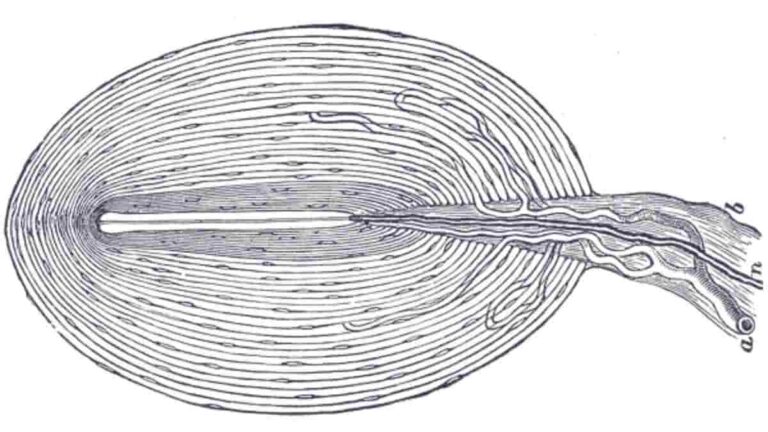The Pacinian corpuscle, also known as the lamellar corpuscle or the Vater-Pacini corpuscle, is one of the four basic types of mechanoreceptors found in mammalian skin. This type of mechanoreceptor is found in both hairy and hairless skin, viscera, joints, and bone periosteum, and is principally responsible for vibration sensitivity. Pacinian corpuscles are fast-adaptable (phasic)…
Category: Resources
Bcl-2 Regulator Protein
B-cell-lymphoma-2 (Bcl-2) is the founding member of the Bcl-2 family of regulator proteins that regulate cell death (apoptosis), by either inhibiting (anti-apoptotic) or inducing (pro-apoptotic) apoptosis. It was the first apoptosis regulator identified in any organism1. Bcl-2 is the second member of a range of proteins initially described in chromosomal translocations involving chromosomes 14 and…
Venetoclax
Venetoclax, (brand names Venclexta and Venclyxto) is an oral medication used to treat adults with chronic lymphocytic leukemia (CLL), small lymphocytic lymphoma (SLL), or acute myeloid leukemia (AML). Venetoclax attaches to the protein Bcl-2. This protein is present in high amounts in CLL cancer cells, where it helps the cells survive for longer in the…
What Is Executive Function?
Executive functions (collectively referred to as executive function and cognitive control) are a set of cognitive processes that are necessary for the cognitive control of behavior: selecting and successfully monitoring behaviors that facilitate the attainment of chosen goals. Executive functions include basic cognitive processes such as attentional control, cognitive inhibition, inhibitory control, working memory, and…
What Is The Vestibular System?
The vestibular system, in vertebrates, is part of the inner ear. In most mammals, the vestibular system is the sensory system that provides the leading contribution to the sense of balance and spatial orientation for the purpose of coordinating movement with balance. Together with the cochlea, a part of the auditory system, it constitutes the…
What Are Schizophrenia Spectrum Disorders?
Schizophrenia and the other psychotic disorders are some of the most impairing forms of psychopathology, frequently associated with a profound negative effect on the individual’s educational, occupational, and social function. Sadly, these disorders often manifest right at time of the transition from adolescence to adulthood, just as young people should be evolving into independent young…
What Is Chemogenetics?
Chemogenetics is the processes by which macromolecules can be engineered to interact with previously unrecognized small molecules. Chemogenetics as a term was originally coined to describe the observed effects of mutations on chalcone isomerase activity on substrate specificities in the flowers of Dianthus caryophyllus. This method is very similar to optogenetics however, it uses chemically…
What Is Thrombin?
Thrombin is a serine protease, an enzyme that, in humans, is encoded by the F2 gene[1]. Prothrombin (coagulation factor II) is proteolytically cleaved to form thrombin in the clotting process. Thrombin in turn acts as a serine protease that converts soluble fibrinogen into insoluble strands of fibrin, as well as catalyzing many other coagulation-related reactions.…
What Is Motion Sickness?
Motion sickness is a condition that happens in association with travel or movement when a difference occurs between visually perceived movement and the vestibular system’s sense of bodily movement. Most kinds are considered terrestrial motion sickness, such as being carsick, airsick, seasick, or sick from reality simulation. Symptoms include dizziness, fatigue, vertigo, depressed appetite, nonspecific malaise,…
